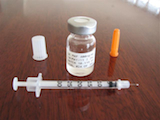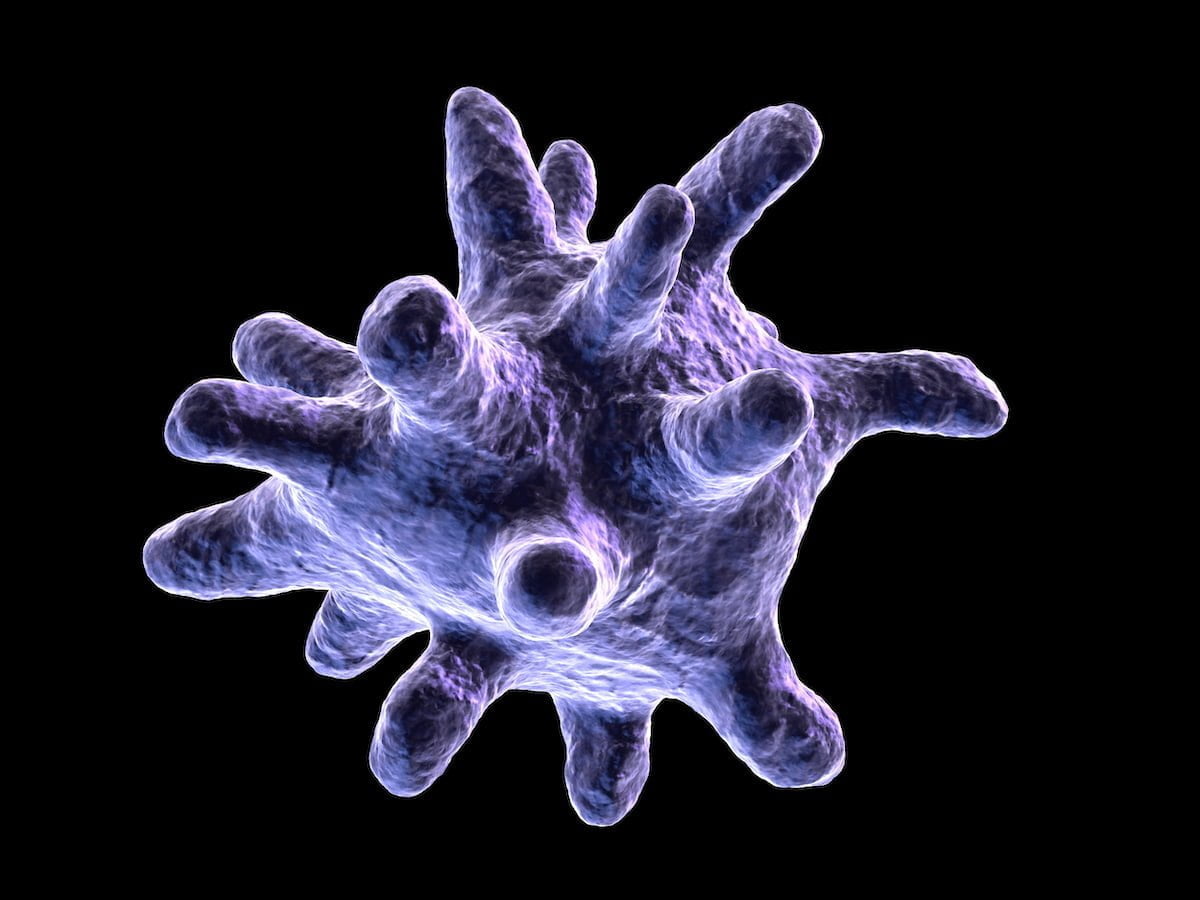This is a very preliminary report about our first 15 patients who wished to administer a trial of GcMAF for their moderate-to-severely affected children, whose primary diagnosis was ASD.
Treatment utilizes a substance derived from a purified blood product, administered weekly by subcutaneous injection. It is supposed to help ‘heal’ the immune system. The background information was first described here.
Patient profiles:
♦ All of the children had a complete history, physical examination, laboratory testing, and various other interventions, and were under Dr. Udell’s care.
♦ All of the children were either on/ or had experience with conventional therapy (ABA, S&L, OT, PT), complementary and alternative therapies (‘DAN!’), and multiple medications; from Risperdal to Prozac (conventional), Namenda to Bumex (experimental), stimulant meds to anti-anxiety preparations.
♦ Patients were diagnosed by a pediatric neurologist, confirmed and documented at each Child Development Center visit.
♦ All the children had severe speech apraxia, with very little improvement from years of S&L therapy, prompting the parents to want further options.
♦ All of the children demonstrated various and persistent repetitive behaviors, sometimes quite disruptive and/or abusive (to self and/or others).
♦ All of the children experienced social isolation.
♦ All of the patients had elevated nagalase levels (>0.95) prior to therapy.
♦ Parents were made fully aware of: risks/benefits/other therapies/no therapy and wished to proceed.
♦ All the families kept in close contact with our staff and Medical Director.
Present protocol:
 The original explanation can be found here. With increasing experience, some variations have taken place, and a more conservative protocol has evolved:
The original explanation can be found here. With increasing experience, some variations have taken place, and a more conservative protocol has evolved:
• Families obtain the product from here, and are instructed to keep the vial in the freezer. • Small syringes are ordered from the local pharmacy.
• Most of the patients prepared syringes for 5 months, freezing them for storage and hand-warming prior to administration.
• Instead of weekly abdominal or arm ‘shots’, a narrow angle into the buttocks appears to be well-tolerated.
• In addition to routine laboratory investigations, vitamin D and cholesterol were addressed before initiating therapy, by testing and intervention as necessary.
• The initial dose was tiny (0.02 cc) and increases were decided each week after discussion with our staff.
• Parents agreed to keep in close contact with the staff and give weekly reports about any changes.
Experience so far (1 – 8 months):
√ Older (> 5 years) seem to do better than younger children, as far as improvements in communication and behaviors.
√ In the first months, some patients have reported no change, others show dramatic improvements in signs and symptoms, and still others have exhibited very challenging disruptive behaviors that diminished with time.
√ Most parents were satisfied enough to re-order the product without nagalase re-testing or even an observation period without GcMAF.
√ To date, improvements appear most dramatic in the preteen females.
√ Two younger males discontinued the treatment because of no effect.
√ No parent discontinued treatment due to negative effects.
√ Side effects included initial hyperactivity, rashes, mild fevers.
√ In many of our patients who were tested – and found to have elevated nagalase levels – the parents were satisfied enough with their present protocol of G-I optimization and mitochondrial support, and have not initiated this therapy, so far.
Conclusions:
![]() No definite assertions or conclusions can be made, from this limited trial, at this time.
No definite assertions or conclusions can be made, from this limited trial, at this time.
I have been impressed, however, at the dramatic improvements that some of children have made. This includes speech acquisition and usage, cognitive function advances, and behavioral changes.
![]() GcMAF does not work in every child, but the ones who do improve have experienced change that hasn’t been apparent in many years.
GcMAF does not work in every child, but the ones who do improve have experienced change that hasn’t been apparent in many years.
![]() So far, safety is best assured by close contact with the parents so that weekly dosages can be altered and other interventions, such as yeast treatment, can be provided.
So far, safety is best assured by close contact with the parents so that weekly dosages can be altered and other interventions, such as yeast treatment, can be provided.
![]() Costs are kept to a minimum because families order and obtain the supplement directly from the manufacturer.
Costs are kept to a minimum because families order and obtain the supplement directly from the manufacturer.
Discussion:
A more detailed report will be submitted to various appropriate venues for review and publication. Hopefully, someone will take notice and perform a more rigorous evaluation. Parents of affected children simply can’t wait for this information, if the treatment is safe enough, not too costly, and reasonable to administer. After all, medications that are approved for behavior control are expensive, as well. Furthermore, at their best, traditional pharmaceuticals possibly diminish aggression and hyperactivity, but don’t improve neurologic function.
As in all medical conditions, if you are considering GcMAF therapy for your child with moderate-to-severe ASD, you should seek advice and treatment only from a trusted professional who has examined, and is closely following, the patient.





You wrote that all patients had elevated Nagalase levels (>0.95). I was wondering what was the mean Nagalase level of the group after a couple of months of treatment and if individually anyone experienced a dramatic drop in Nagalase levels.
These have not been rechecked – the cost of the test is $85, and the parents who re-ordered were going to re-order anyway. That will be an important followup lab. Thank you.
This is from 2014. Are there any updates?
Apparently, it is getting a fair amount of use in Europe?… utilizing the Japanese version.
Currently, only ‘analog’ products are FDA approved in US, and there isn’t much information about safety, side effects or outcome.
Had read about GcMAF on Dr. Bradstreet’s blog, and now on yours,,, am becoming very interested in it.
My 3 yes old son is mild autistic . Please suggest the doses read and how to order
The company gcmaf.eu stopped producing the product.
I would also like to try this on my daughter who was diagnosed PDD-NOS. She has gone thru many therapies, including HBOT, supplements, therapies, homeopathy, I think this is what we have been looking for. How do I order, please let me know
So… it isn’t available – at least, not in a form that has shown efficacy (I’m certain that ‘something like it’ exists).
For some of our parents, that therapy had been helpful, so it’s disappointing.
Could u plz explain why they stopped producing it, and what is the alternative please.
I don’t know. Your practitioner needs to search for safe alternatives to address immune function.
This is often quite a challenge.
We have been purchasing GcMAF for our 14 year old boy from http://www.gcmafplus.com and so far are very happy with the results after 3 months. There is a very definite improvement in his general behavior and we are going to continue this. The company who sells it is very professional and the 3 orders we have placed so far have all come quickly.
That’s great. Language acquisition was the goal when parents were able to administer the subcutaneous injection. I haven’t heard of much improvement from the other forms of the product, such as advertised here.
I recently purchased a proprietary probiotic GcMAF drink for my son. At the same time I started researching and obtained a nagalase test. In the six weeks since, I have noticed and more spontaneous conversation and more emotion from him and I am very pleased. Today I received his results from the blood test to see if moving to injections will be even more beneficial. The problem is I am not sure I am interpreting the test results correctly. One range is ( and yes they used a comma not a period ) 0,47 to 1,09 and my son’s number was 0,97. Does this mean he has a high count and would benefit from injections?
Well, that would mean that his nagalase level is presently in range.
?the result of the drink?, but not indicating that GcMAF might be of further help.
As far as I know, gcmaf injections are not available anymore. Or are they? If anyone knows, can you please let me know? Thanks. Also, can anyone advise about the best products for an autistic boy (15 years)? If gcmaf can be taken orally, how? Sweets? Pills? Any help would be appreciated. Mr. Alfred Wilde. alfred.email@yahoo.com Please feel free to email me.
I’m sorry to say that, our patients who have tried any of these products:
https://www.saisei-mirai.or.jp/en/macrophage_eng/
have not seen improvements.
I live in Canada, my son is now tens years old and I wanted to know if any of these treatments are available in my country? Also, I must note he has a strong immune system, would any of the treatments work? He does say a few words, he has learned sign language. If you need anymore information just ask.
https://www.medmaps.org/clinician-directory/
A great place to start!
do the gcmaf productes such as creams or sprays for under the toung work ? do the gcmaf yogurts work ? from some sources i have heard that gcmaf is to large to be well absorbed in the mouth or on the skin. and also that stomach acids destroy it – so not sure how the yogurts work(colostrum, raw milk, yeast or keifer, probiotics, ferment 8 hours). my toddler is almost three and not talking at the level he should be, bad vaccination reactions? Im not sure but I would like to try gcmaf but would like to avoid injections if possible, thanks.
No